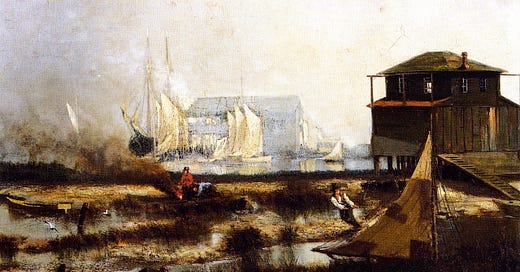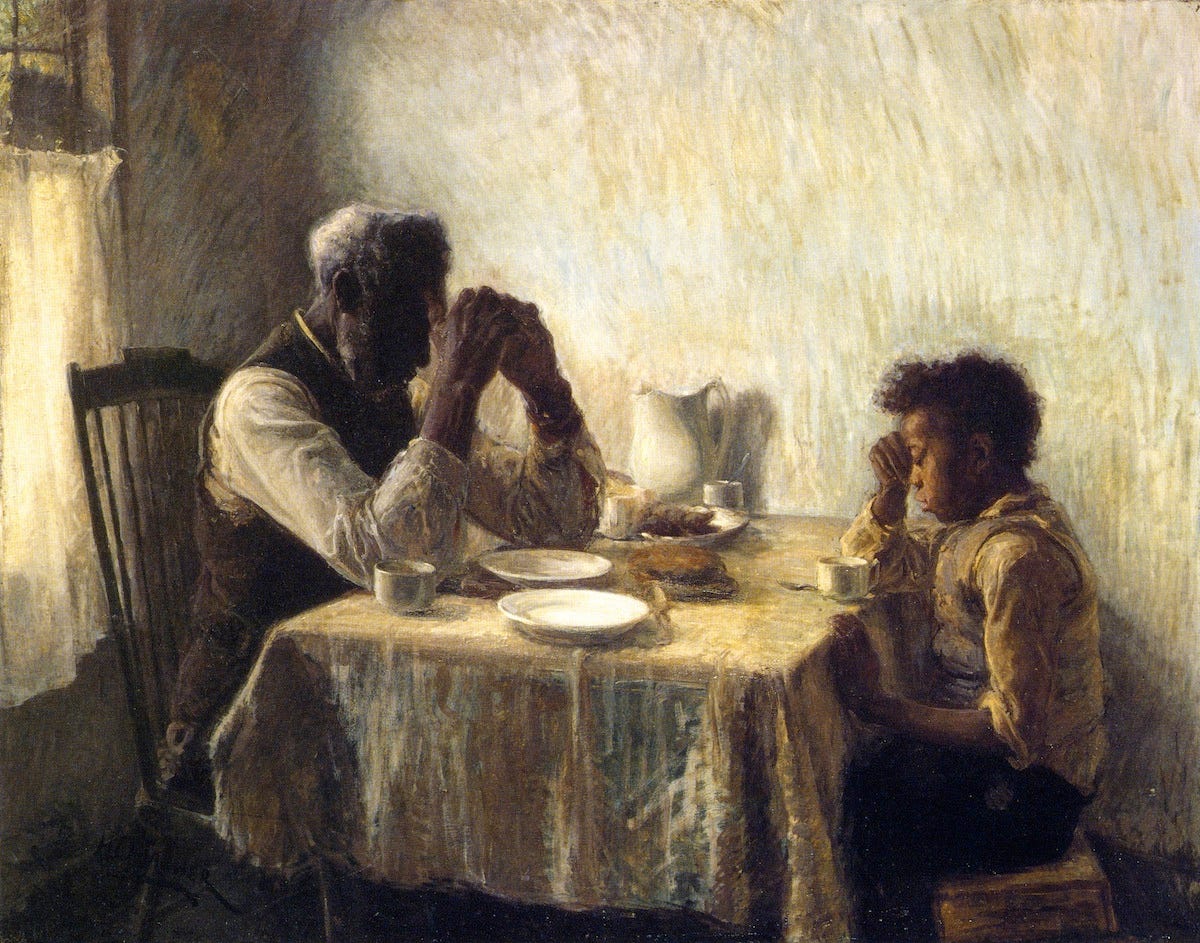Henry's pursuit of art came with mixed emotions. Being black made everything more challenging and burdensome for the sensitive young man. His first difficulty came in learning the craft as one studio after another rejected him when he sought their teaching. "I plodded along as best I could without instruction," he wrote later.
Despite these setbacks, Henry did have his father's ethos of hard work, discipline, and a positive attitude. Though still just in his early teens, he walked the streets of Philadelphia, observing art in store windows. He later recalled:
"After school, I would often go down on Chestnut Street, to see the pictures in Earle's Galleries, or in the window of Bailey's jewelry store. How well I remember 'A Foggy Morning,' by Cowell—in whose studio I afterward worked; or 'A Morning at Long Beach,' by Senat; how much better the numerous 'Storm at Sea,' by Hamilton, and still more numerous 'Breezy Day off Dieppe,' by Briscoe; how, after drinking my full of these art wonders, I would hurry home and paint what I had seen, and what fun it was!"
At home, Henry eagerly read books on art from his father’s library, supplementing his observed education with whatever knowledge he could gather.
It did help that Henry had his family’s support, even though they didn’t always believe art was a wise career choice. His father consistently helped financially and provided connections that eased some of the challenges Henry faced, giving him access to opportunities that most black or even many white Americans could not attain. This support eventually led him to the prestigious Pennsylvania Academy of the Fine Arts. Though there, dealing with racism continued as Henry was the only black student. He wrote:
"I was extremely timid, and to be made to feel that I was not wanted, although in a place where I had every right to be, even months afterward caused me sometimes weeks of pain. Every time any one of these disagreeable incidents came into my mind, my heart sank, and I was anew tortured by the thought of what I had endured, almost as much as by the incident itself."
While many of these “disagreeable incidents” took the form of verbal abuse, there were also times when Henry was brutally beaten. The sorrow from these experiences weighed heavily, and he frequently fell ill during these formative years.
Despite these hardships, the Pennsylvania Academy of the Fine Arts became pivotal in Henry's artistic development. His talent began to evolve into something extraordinary under the mentorship of Thomas Eakins, a teacher and arguably one of the most famous painters in Philadelphia. One lesson from Thomas stood out in particular and would stay with Henry for the rest of his life:
Keep reading with a 7-day free trial
Subscribe to Historical Snapshots to keep reading this post and get 7 days of free access to the full post archives.





